
Now, LinkedIn is seeing a bit of a comeback with their groups. As more brands and creators are coming to the platform from X, LinkedIn has seen a lot more success in their groups than before.
What are LinkedIn groups?
What is a LinkedIn group? Groups on LinkedIn are communities of users gathered around common interests. Groups are great because they help you see niche-specific content and bring people together based on shared interests.
Essentially, they’re already sorted audience lists that could potentially be your leads!
For example, if you’ve developed a product for graphic designers, you can connect with these individuals through designer groups. Another benefit of groups is that you can send messages to members of a group you’re in without spending InMail credits or requesting an invitation. That’s why creating groups and outreach through them is still relevant, fresh, and useful!
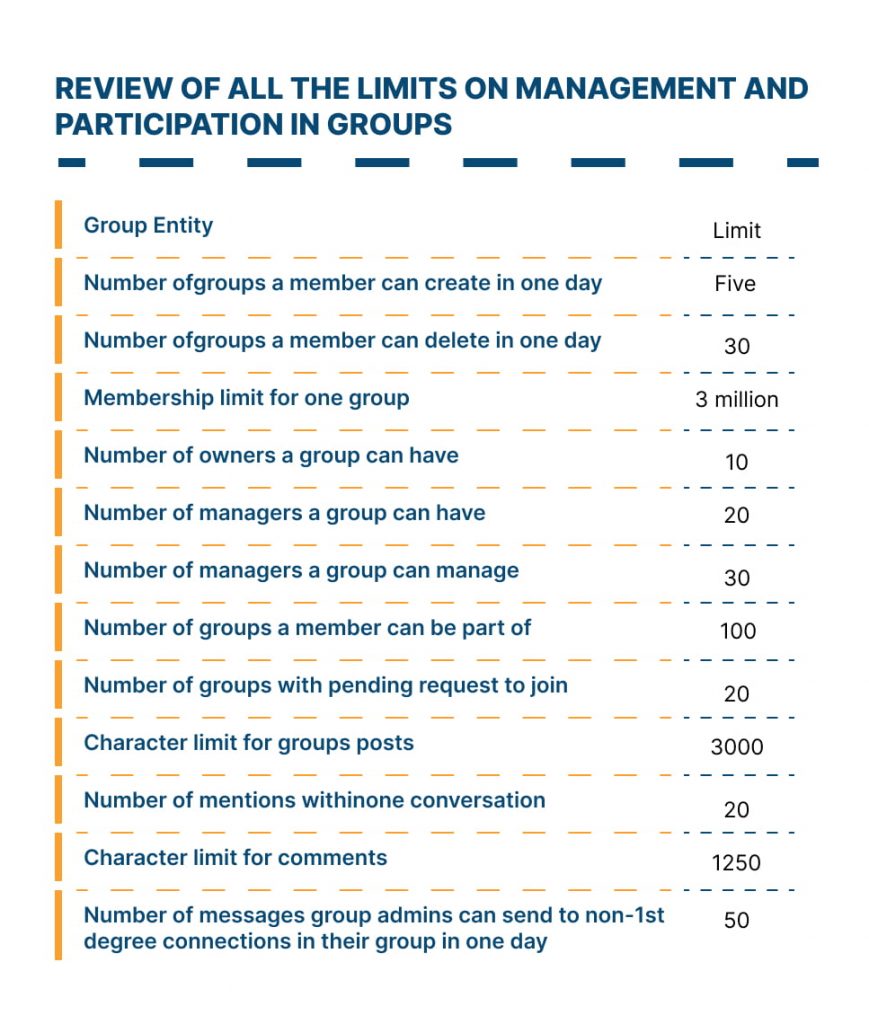
Additionally, by joining niche groups, you’re teaching the algorithm what niche interests you, and it can recommend connections to add to your network. Participating in groups can also lead to an increase in incoming invitations because group members will see your profile.
Download Linked Helper 2
and get 14-day free trial right now
DOWNLOADIf you are not yet in our list of users, then join.
We give you a trial version to start your experience with our LinkedIn tool.
How to use LinkedIn groups – Purpose of groups
Networking – Seek out people in niche fields and send them direct messages. Being in the same group provides an excellent reason to reach out and find common ground. Plus, you can send messages through groups without needing to add them to your network.
Content Creation – Groups can be a source of inspiration for your content. Subscribing to top groups and studying comments under posts left by your target audience can spark new content ideas.
Lead Magnet – As demonstrated by some LinkedIn users, groups can be utilized to redirect traffic to a landing page. You can set up messages for new group members with a call-to-action to drive visits to your website.
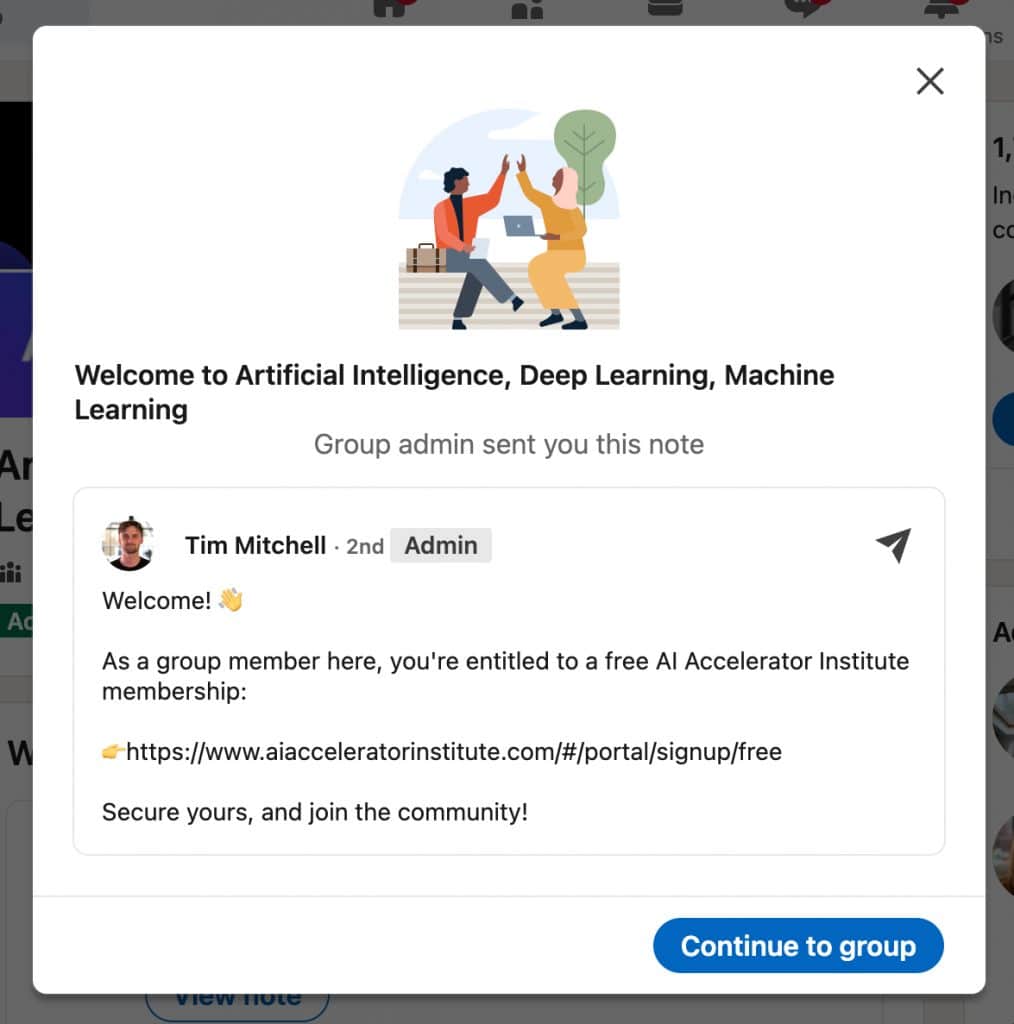
Learn how to use LinkedIn groups for lead generation.
How to create a LinkedIn group: Step-by-step guide
Accessing Your Groups
Open the Groups Page: Visit the LinkedIn Groups page on your profile. Here, you will find a list of all the groups you are a member of and a button to create your own group on LinkedIn.
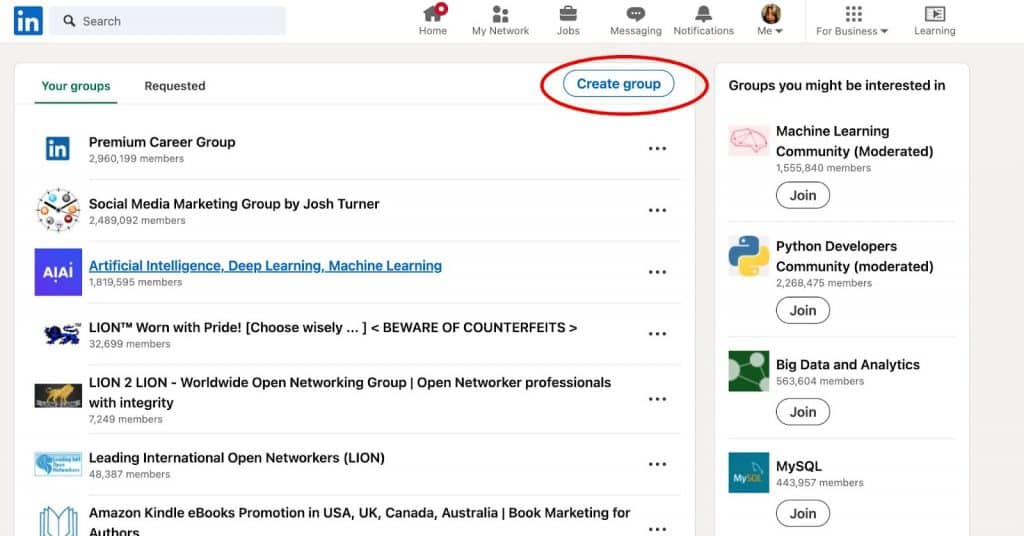
Create a Group: Click the button to create a new group. A window will open where you can add a logo, cover image, and fill in various text fields. The group description can be up to 2,000 characters, allowing you to create a comprehensive text with relevant keywords.
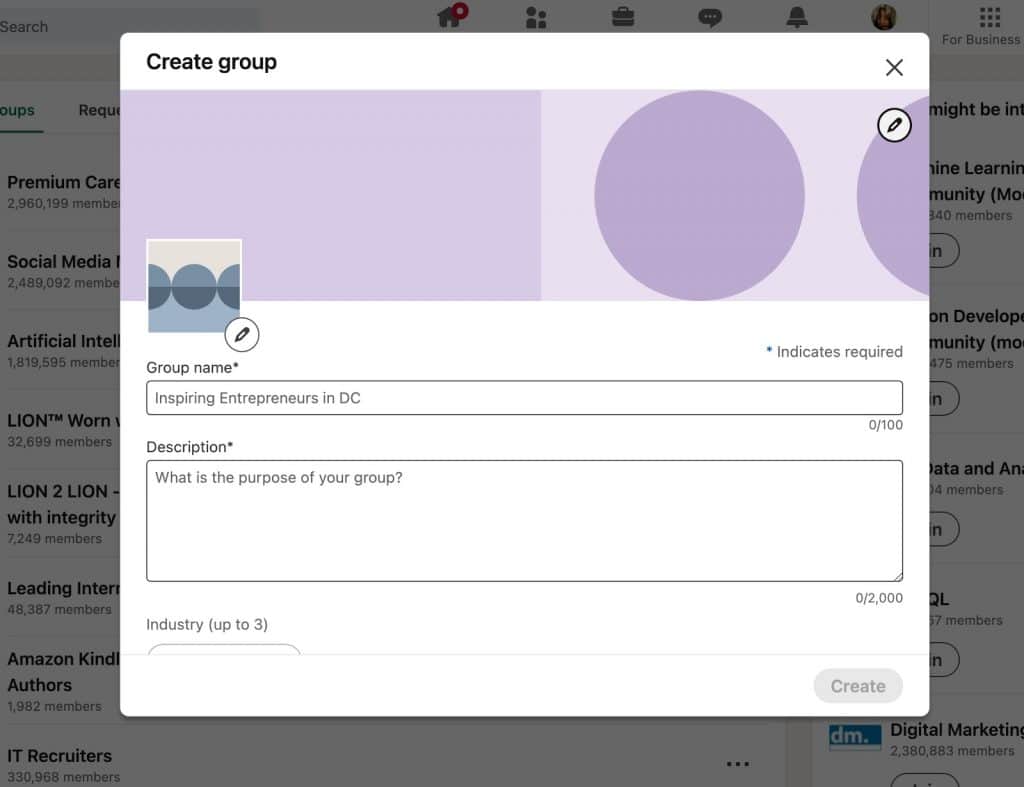
Detailed Instructions: For a detailed guide on creating a group, refer to this LinkedIn help page.
Setting Roles and Permissions
Privacy Settings: Note that you can only set the group’s privacy settings once, and they cannot be changed later. If you create a private group where posts are visible only to members, you won’t be able to make it public later.
Post and Invitation Settings: Decide whether posts require admin review before being published and whether members can invite their contacts to the group.
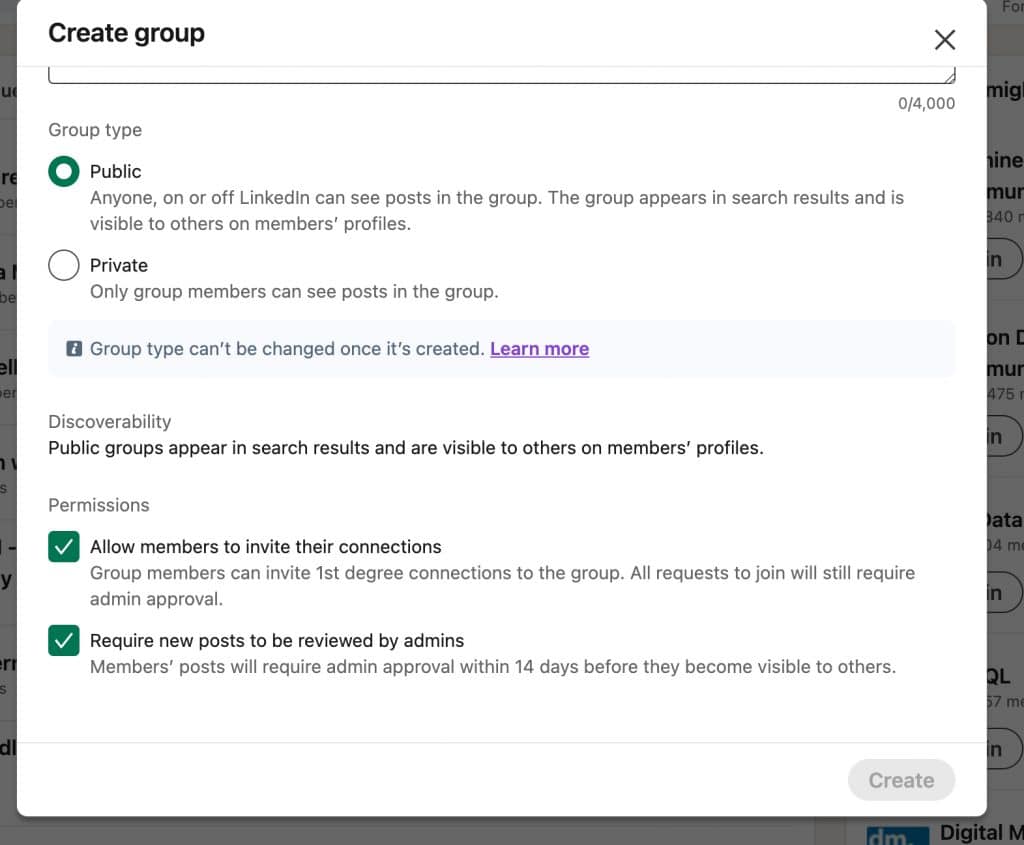
Posting Content: Once you have configured these settings, you can start adding posts to the group!
Earning the Active Group Badge
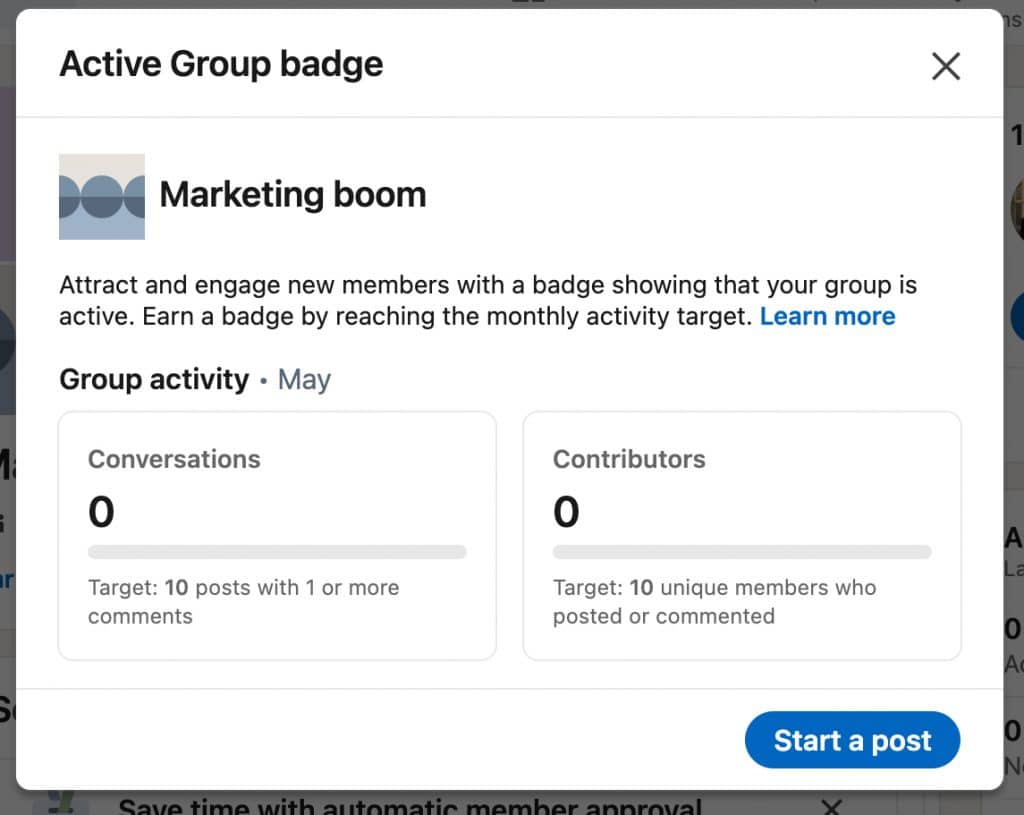
To obtain the “Active Group” badge, which is crucial for new groups to demonstrate daily activity:
- Ensure the group has at least 10 posts, each with a minimum of one comment.
- Ensure there are posts or messages from at least 10 unique users within the group.
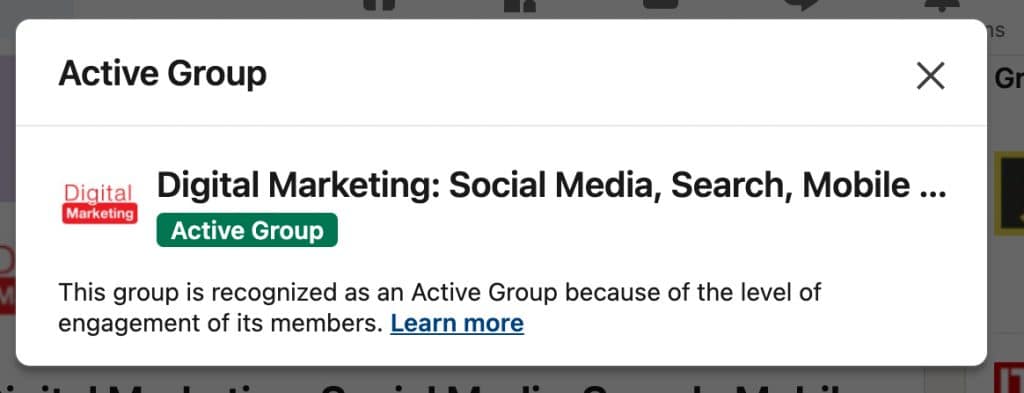
How to Post in LinkedIn Groups Without Creating Your Own Group

You can reach your target audience by posting in relevant LinkedIn groups. Many groups are open, and some posts don’t require moderation. However, in such groups, your post might get lost among spam. To ensure your post is effective and visible, follow these guidelines:
- Understand Group Rules: Each group has specific rules regarding posts. Ensure your content complies with these rules, such as avoiding personal contact information, direct advertising, and staying on topic.
- Create Valuable Content: Post content that adds value to the group. This could include insights, industry news, or helpful resources. Quality posts are more likely to be approved and engage members.
- Moderation Process: Be aware that your post may be subject to moderation and could take up to 14 days for approval. Patience is key, and following the rules increases the chances of your post being approved.
For more detailed information on posting in LinkedIn groups, you can refer to LinkedIn’s help page here.
Can you make a private LinkedIn group?
Yes, you can create a private LinkedIn group. In a private group, only approved members can see the posts and participate in discussions. This format has several advantages:
- Reduced Spam – With moderation in place, there is less spam, ensuring higher quality content.
- Focused Discussions – Members are more likely to engage in meaningful discussions relevant to the group’s theme.
- Exclusive Content – The private nature of the group can motivate people to join, as they will have access to valuable content and networking opportunities.
Creating a private LinkedIn group is a great way to foster a dedicated community with relevant and high-quality interactions.
Use these group description ideas 2024
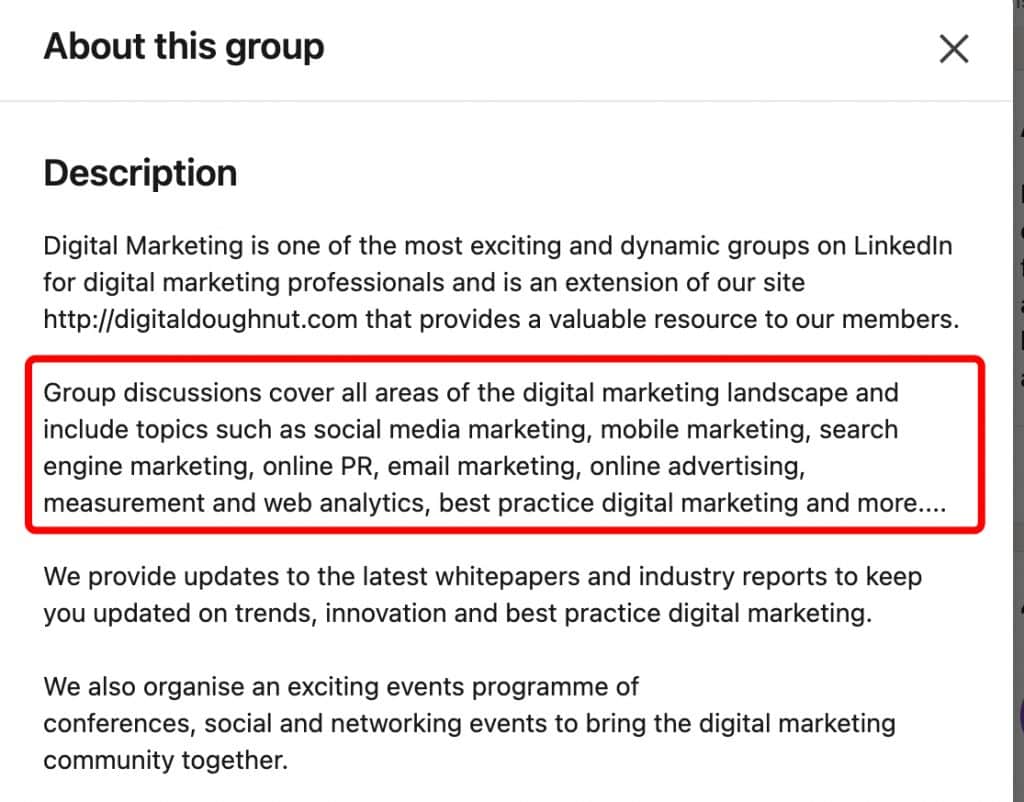
Creating a compelling group description involves several key elements. Here are some ideas on what to include:
#1 Mission and General Idea
Clearly state the mission and overall purpose of the group. Explain what the group aims to achieve and who would benefit from joining.
Example: “Our mission is to bring together professionals in the tech industry to share insights, discuss trends, and network. This group is dedicated to fostering a community where members can learn from each other and grow their careers.”
#2 Website Link
Include a link to your website to provide more information and resources.
Example: “For more resources and information, visit our website at www.techcommunity.com.”
#3 Key Benefits and Content Value
Highlight the value of the content shared within the group, such as access to the latest whitepapers, industry reports, event programs, etc.
Example: “Join us to gain access to exclusive content including the latest whitepapers, industry reports, and details on upcoming events.”
#4 Keywords
Use relevant keywords to improve the group’s visibility and attract the right members. Make sure these keywords reflect the core topics of interest.
Example: “Keywords: technology, innovation, networking, industry trends, professional development.”
#5 Code of Conduct in Groups
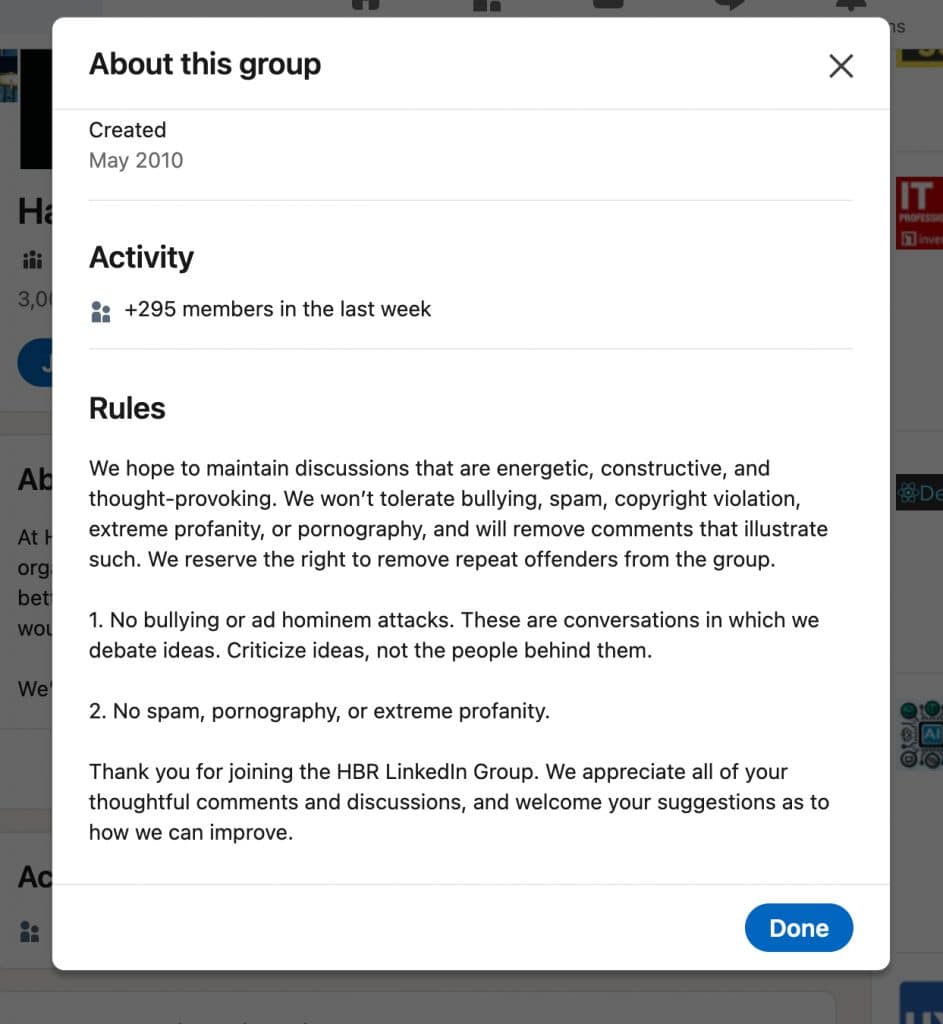
Establishing a clear code of conduct is crucial for maintaining a respectful and focused community. Here are some guidelines to consider:
No Spam or Irrelevant Content: Protect members from spam and irrelevant content. This includes prohibiting unsolicited job postings, advertisements for products, and irrelevant links.
No Sharing Personal Contact Information: Forbid sharing personal contact details such as emails and phone numbers to protect members’ privacy.
Stay on Topic: Ensure all posts are relevant to the group’s purpose. Discourage off-topic discussions to maintain the group’s focus.
Respectful Interaction: Promote a respectful and supportive environment. Any form of harassment or offensive behavior should be strictly prohibited.
Try Welcome Message for New Members
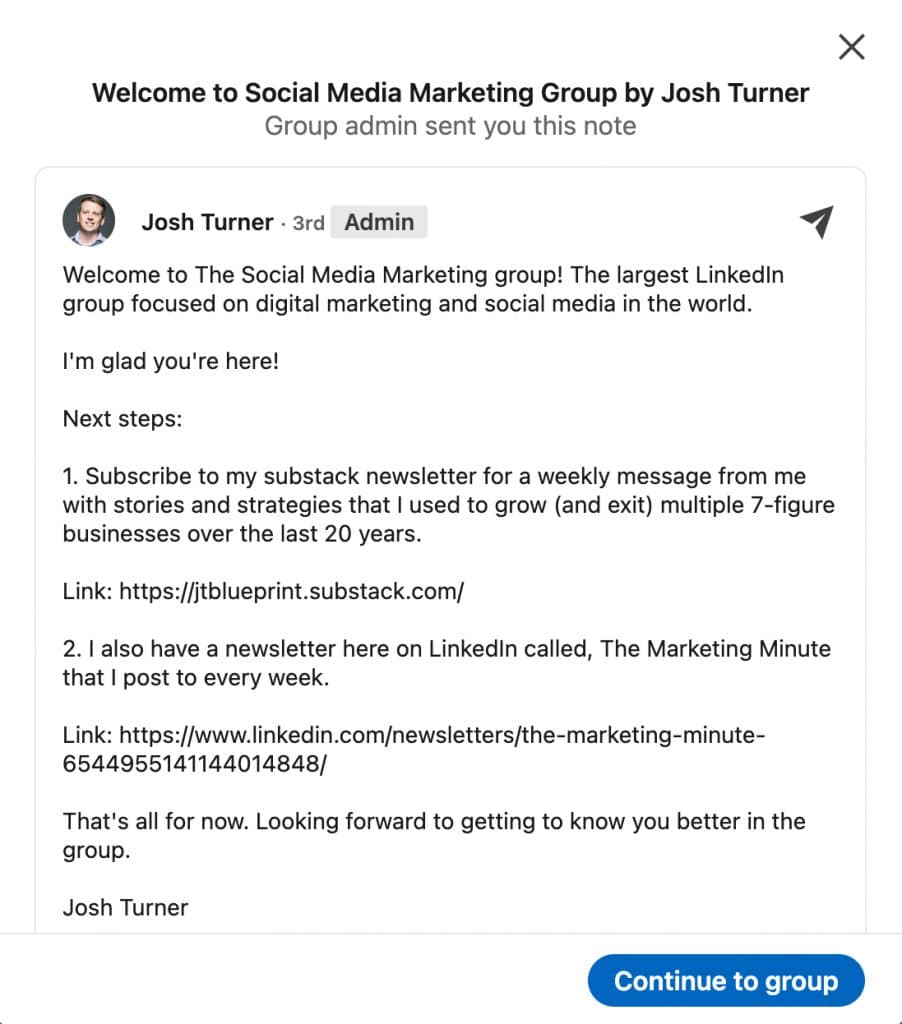
As a group admin, you can send a welcome note to new members. This message can include a greeting and links to additional resources or newsletters.
Example: “Welcome to the Tech Innovators Group! We’re excited to have you here. Be sure to check out our latest industry reports and sign up for our newsletter to stay updated on upcoming events. Subscribe here.”
Crucial Tip: Admin Profiles
The descriptions of admins are visible from the group page when someone visits. Among other things, they can notice the admins profile headlines. Therefore, as an admin, you can attract more members if you thoroughly describe your experience and achievements.

How to delete a LinkedIn group
Deleting a LinkedIn group can be done quickly and easily. Here’s how:
1. Navigate to the page of the group you want to delete.
2. Click on the pencil icon to access the group’s settings.
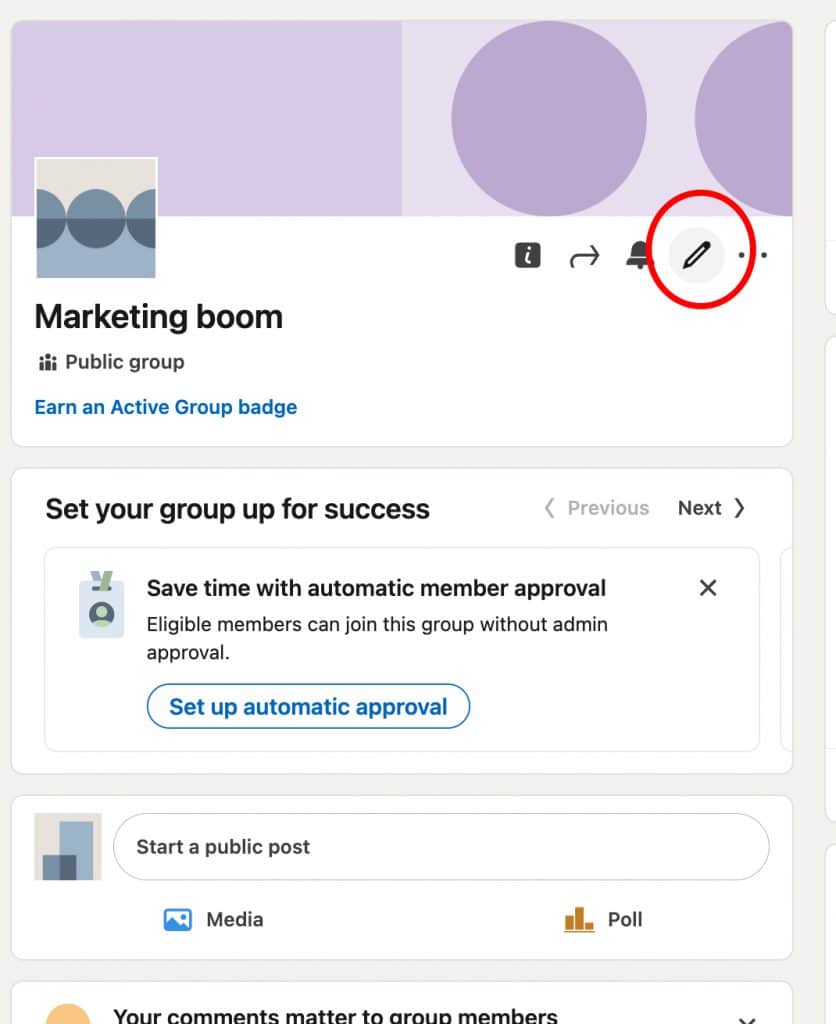
3. Scroll down to the bottom of the settings page.
4. At the bottom, you will find the “Delete Group” button. Click on it to delete the group permanently.
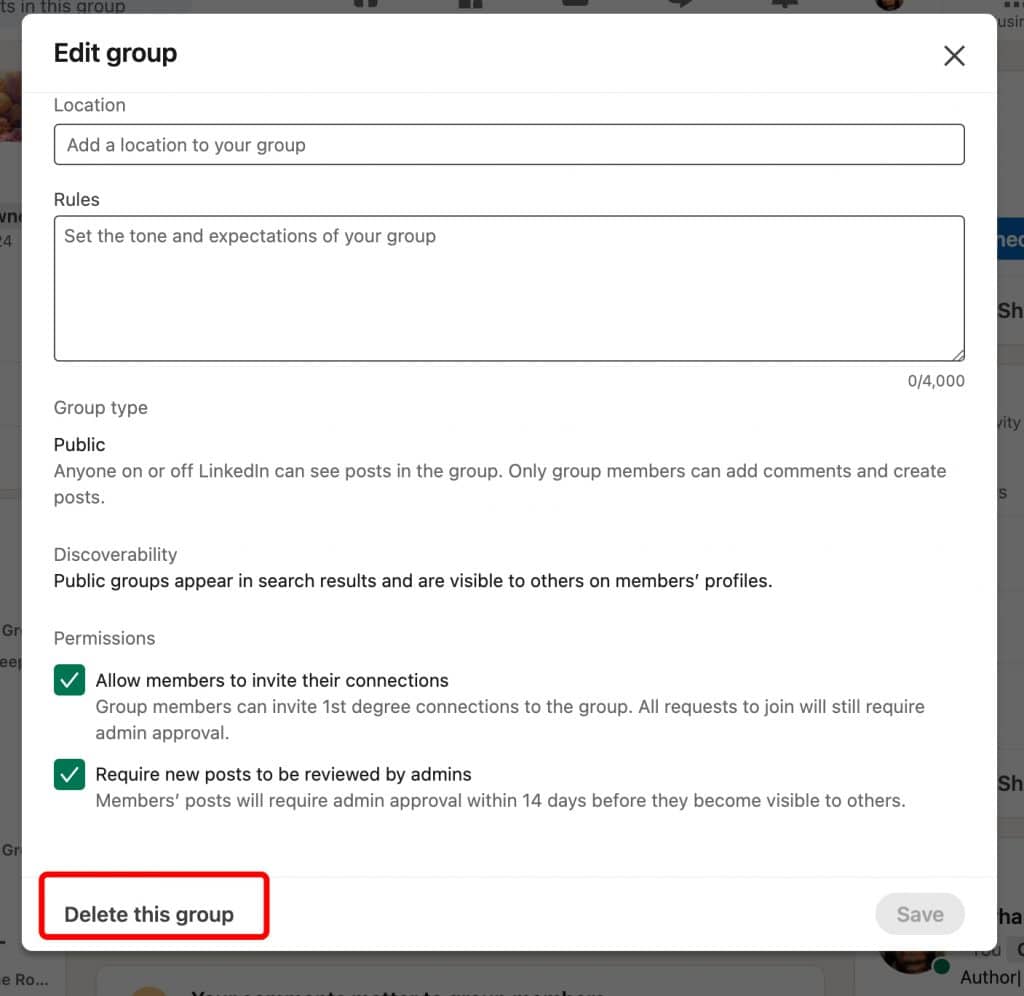
Important Notes:
- Once the group is deleted, it cannot be restored, and its members will no longer have access to the content.
- It’s considered courteous to post a notification about the group’s deletion to inform members.
- If you prefer not to delete the group, you can transfer management rights to another person.
These steps ensure a smooth process for deleting or transferring ownership of your LinkedIn group.
How to search and join groups on LinkedIn
You can easily and freely join any group on LinkedIn. To do this:
- Find the desired group. Use keyword search or go directly via a link.
- Click the Join button.
After this, all new posts from the group will appear in your news feed, and the group will be listed in your groups.
Note that for a private group, you might have to wait a few days for approval.
Find quality communities: Search LinkedIn groups right
Sometimes, new users find it difficult to discover communities that produce high-quality content. Here’s how to get started:
Use Keywords in the Search Bar
Enter a keyword in the LinkedIn search bar. LinkedIn will look for this keyword in group names.
Review Active Groups
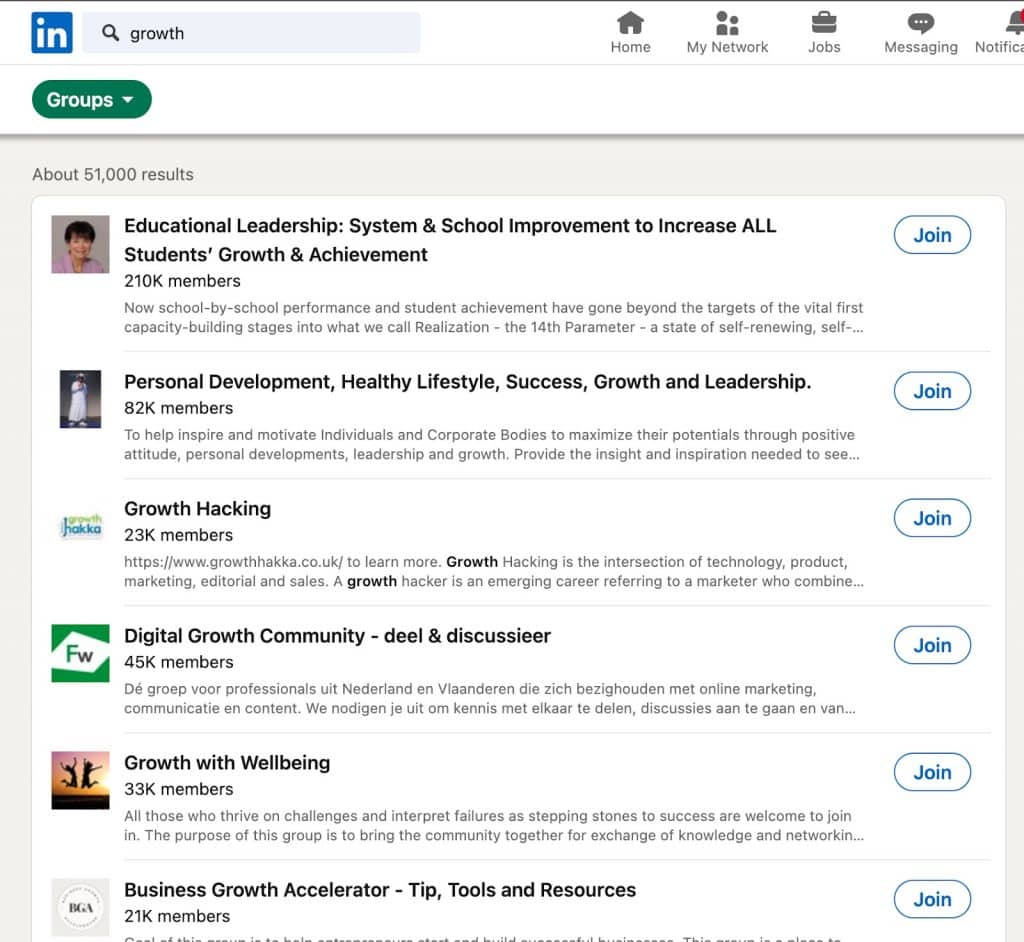
At the top of the search results, you will see the most active groups with a large number of participants. For example, searching for the keyword “growth” on LinkedIn returns over 51,000 groups.
Explore Similar Groups
After selecting a group from the search results, you will see a section for similar groups. These groups might not include your keyword in their names but will have a similar mission and theme, making them worth checking out.
Finding Groups by Influencers
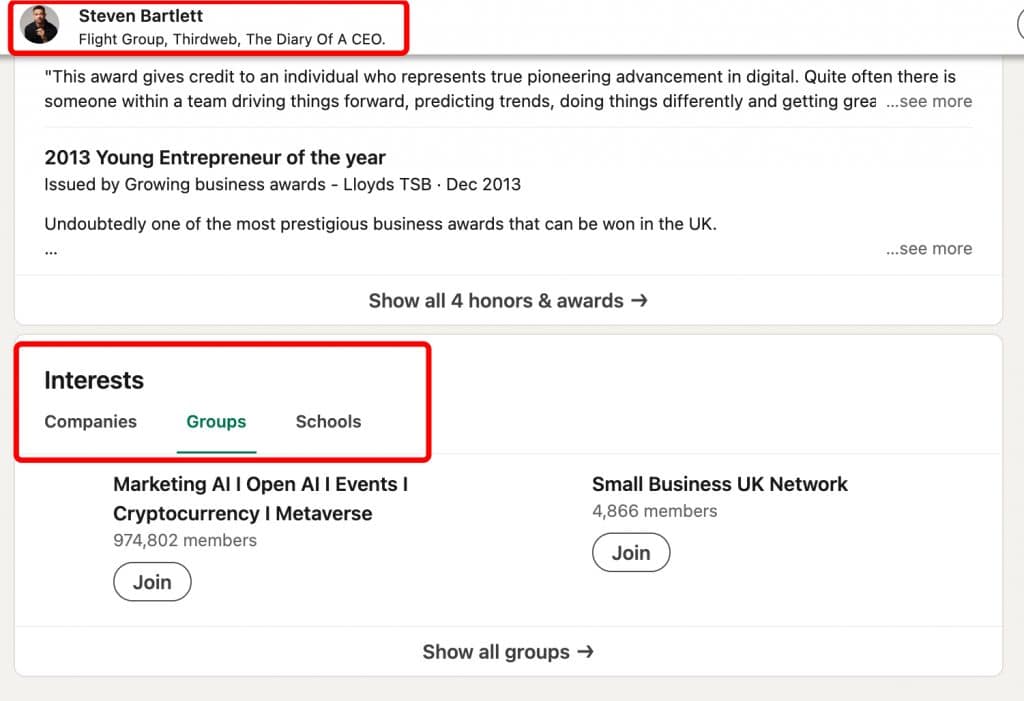
Here’s a clever trick if you’re new to the industry or LinkedIn and unsure which groups offer high-quality content and members:
- Identify Top Voices: Find the top voices in your niche.
- Check Their Group Memberships: Look at the groups they are members of. This is a reliable way to find quality groups since these groups have already been vetted by industry leaders.
Finding People by Groups in Sales Navigator
LinkedIn Sales Navigator offers a unique filter for searching people based on their group memberships. This allows you to target a niche audience precisely:
- Use the Filter: Choose one or more groups in your search criteria to find only the members of those groups.
- Refine Your Outreach: By using this filter, you can create a more targeted selection and reference the group in your invitation messages, making your outreach more personalized and relevant.
15 LinkedIn groups – best practices
Below you will find examples of successful groups that can serve as ideas for creating and managing your own group, as well as for joining to find relevant content.
5 LinkedIn groups to join to target B2B companies
#1 Harvard Business Review
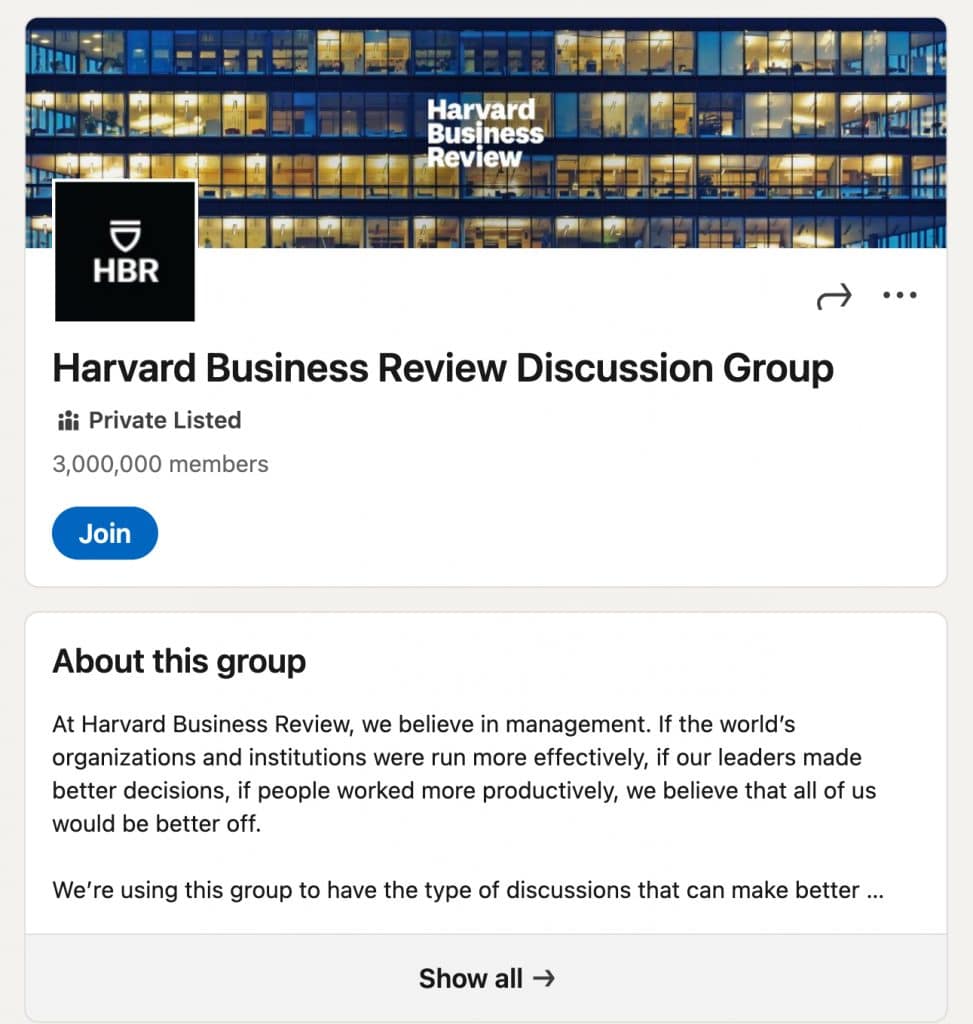
The Harvard Business Review group is known for its high-quality content because only group employees and contributing members can post. With 3 million members, this group predominantly consists of individuals involved in B2B management.
The content focuses on creating effective management practices and leadership. Therefore, it offers valuable networking opportunities. Additionally, being a private group ensures the security and reliability of contacts.
#2 Sales Management Executives
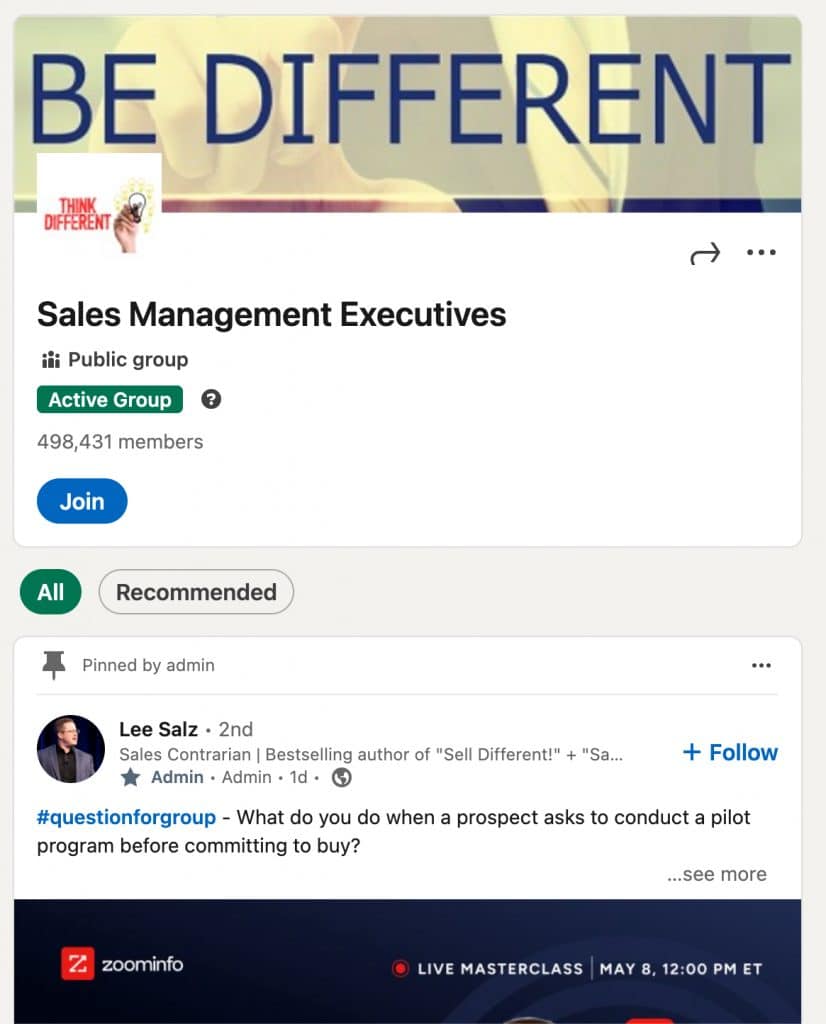
If you’re looking for B2B sales contacts, consider this group. It focuses on knowledge sharing within the sales community. With nearly 500,000 members, many of whom are active, joining this group can keep you updated on sales news and help you find potential clients.
#3 Sales Playbook!
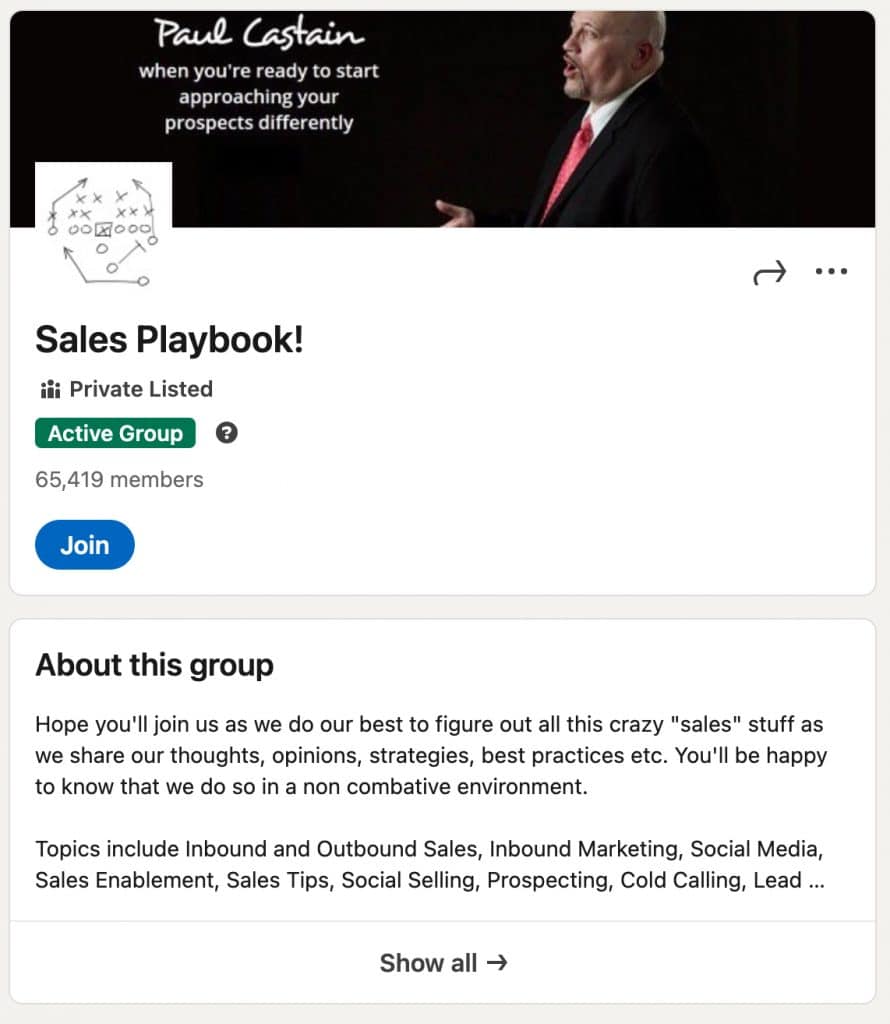
Sales Playbook! is a well-known B2B group that requires an application to join. Once you’re in, you can connect with valuable contacts in B2B sales. Despite having 65,000 members, the emphasis is on quality content. Established in 2009, the group covers topics like inbound and outbound sales, inbound marketing, and social selling.
#4 B2B Sales Connections
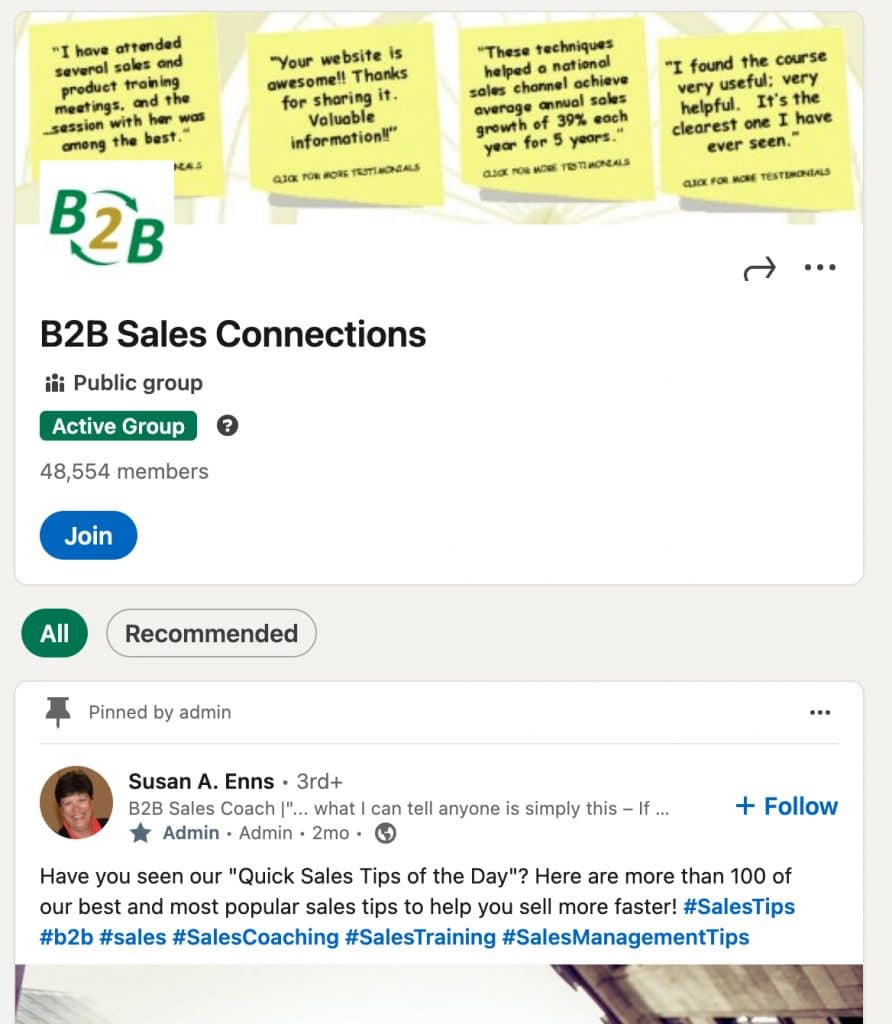
This public group targets B2B sales professionals, offering a great chance to find leads or partners. It is one of the top 19 sales groups on LinkedIn and the eponymous website has been recognized as a top sales blog. The group is highly active and engaging, providing a reliable source of quality content.
#5 B2B Social Media For Lead Generation
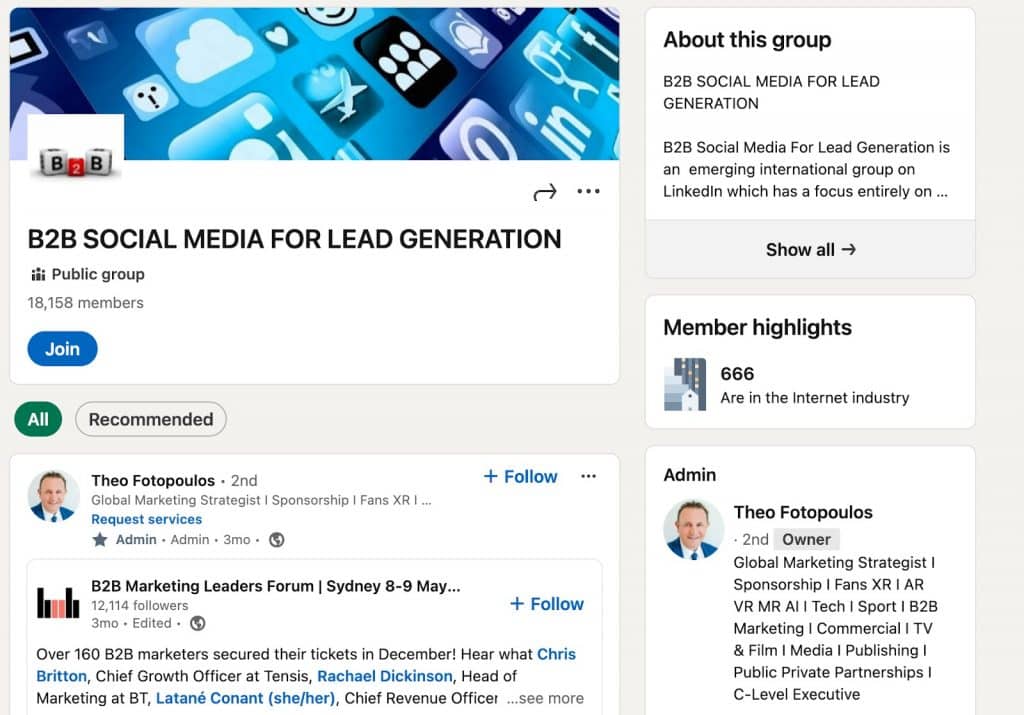
The aim and mission of this group are evident from its name: to help you generate leads in the B2B niche. This open group of 18,000 members focuses on lead generation, event organization for growth, and exploring new markets. Here, you can find top marketing company leads, CMOs, business development heads, sales managers, and other key business contacts.
5 Professional groups on LinkedIn
If your goal is networking rather than lead generation, there are numerous niche-specific groups to consider.
#1 IT Community
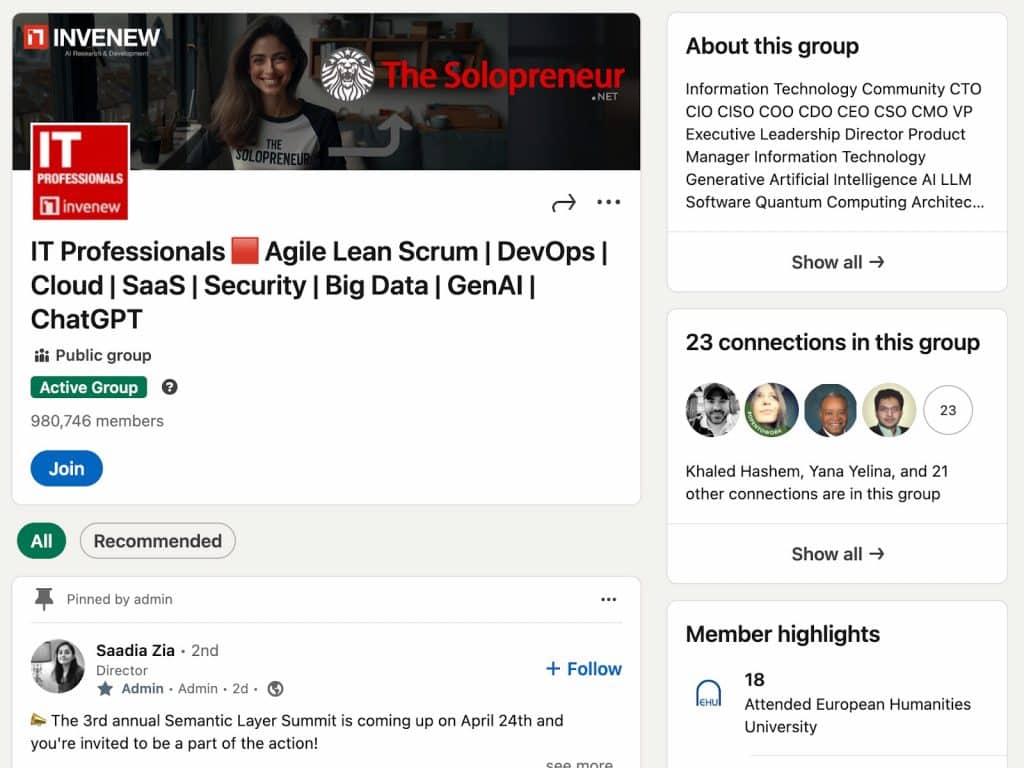
This community of 980,000 members is focused on IT professionals. It includes participants from various niches such as AI, software, quantum computing, data science, QA, blockchain, NFTs, the metaverse, and more.
The community also offers a newsletter, allowing you to receive updates via email if that channel is more convenient for you.
#2 Business Analysis Professionals
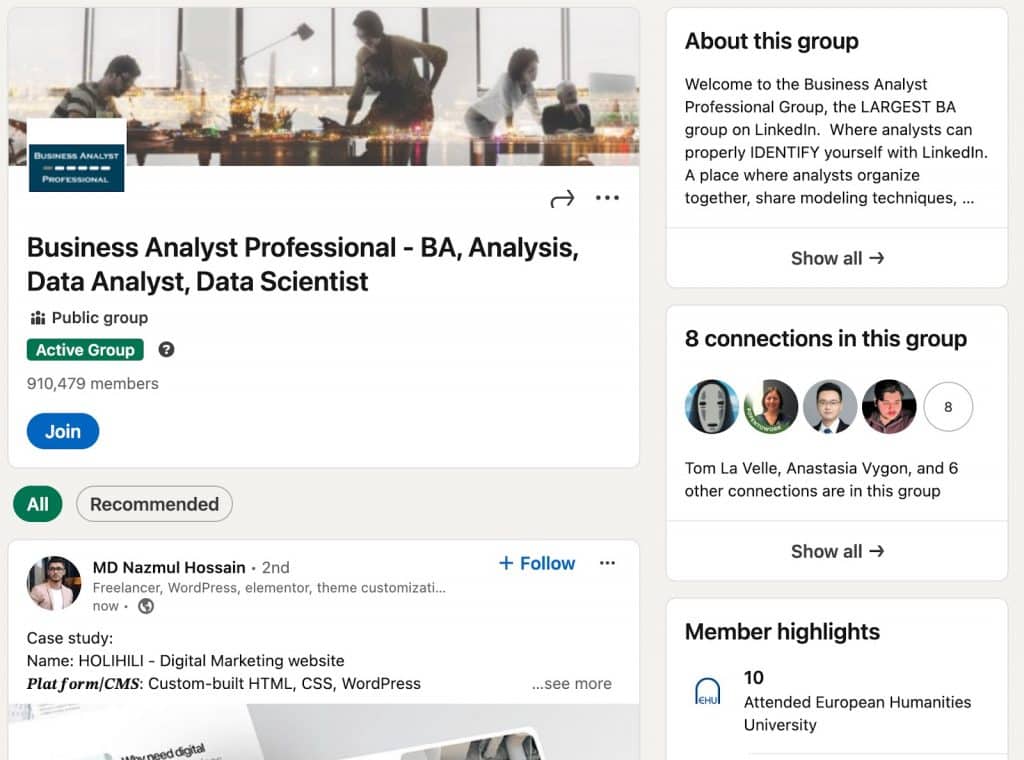
If you specialize in business analysis, staying updated with the latest industry news is crucial. Joining a community is an excellent way to receive case studies, stay informed about trends, and learn about industry events. This is the largest group for business analysis on LinkedIn, offering valuable resources from members, including templates, infographics, and presentations for education and content development.
#3 IT Hiring Professionals
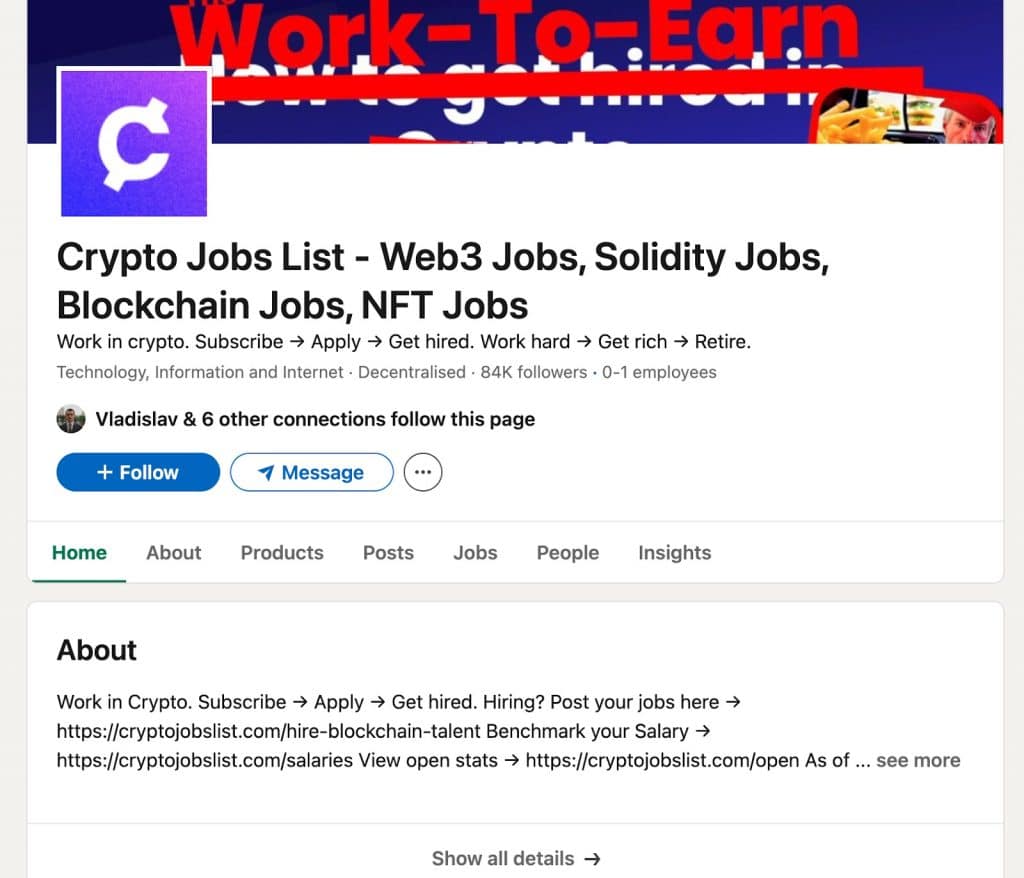
This niche group is designed for IT hiring professionals. You can post your job vacancies or apply for job opportunities. The group features over 3,000 job listings.
It’s a trusted community used by organizations like the Ethereum Foundation, Zcash Foundation, and Filecoin Foundation. Another quality indicator is the support channel available via email.
#4 Germany Business and Professional Network (local)
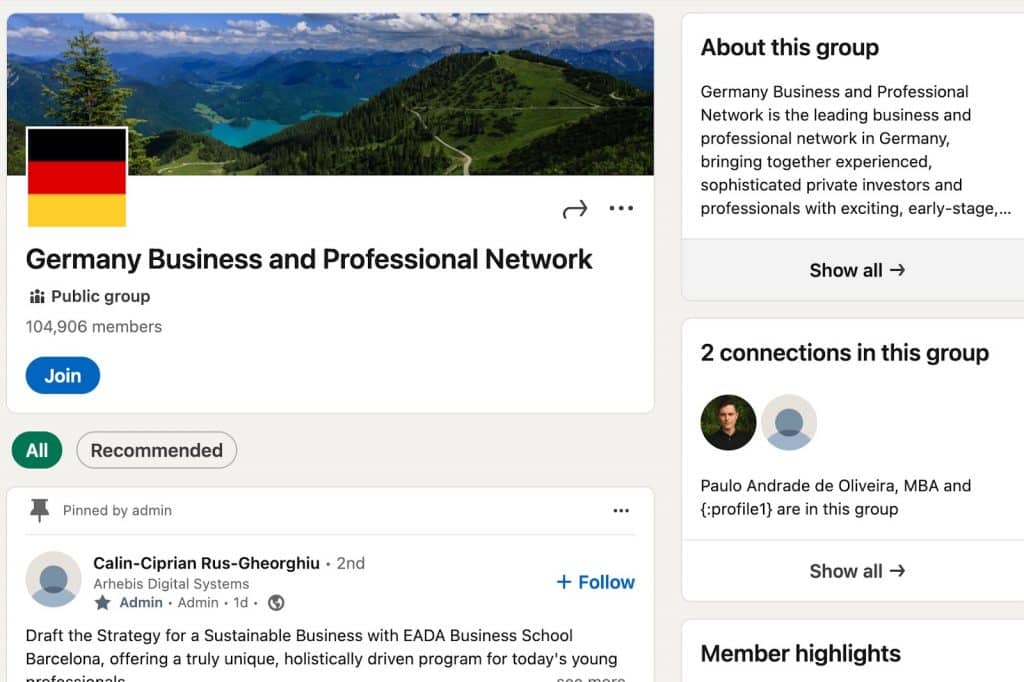
Germany Business and Professional Network is the leading business and professional network in Germany. It connects experienced private investors and professionals with exciting early-stage, high-growth companies.
This local professional community has over 100,000 members, making it an excellent place to expand your contacts in the German market. You can find similar groups tied to other locations.
#5 LION groups
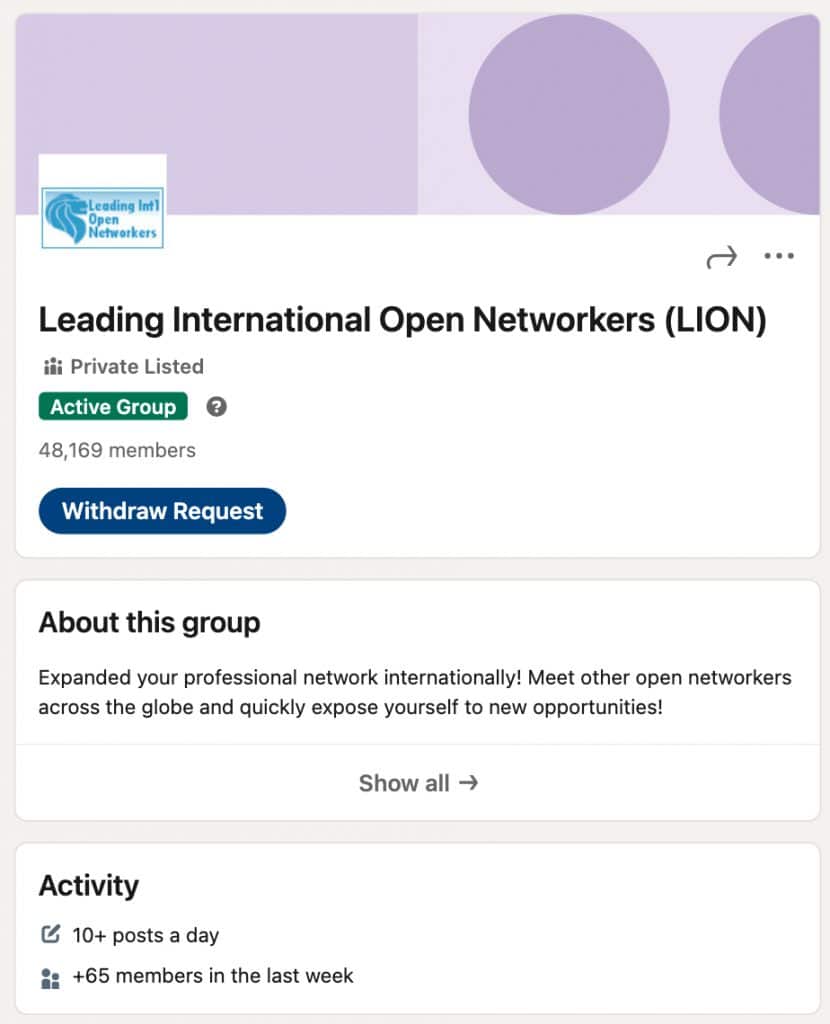
LION (LinkedIn Open Networker) groups are dedicated to professionals who want to expand their networks rapidly. Members of these groups are open to connecting with others without prior introductions and will often accept connection requests immediately. Joining a LION group can help you organically grow your network to 500+ connections. These groups include professionals from various industries and locations.
For more information on LION groups and their rules, check out our article about LION networking.
5 LinkedIn groups to join by niches
In every industry, there’s a LinkedIn group where your potential colleagues or leads are already sharing news and insights. Below are examples of niche communities.
#1 Digital Marketing
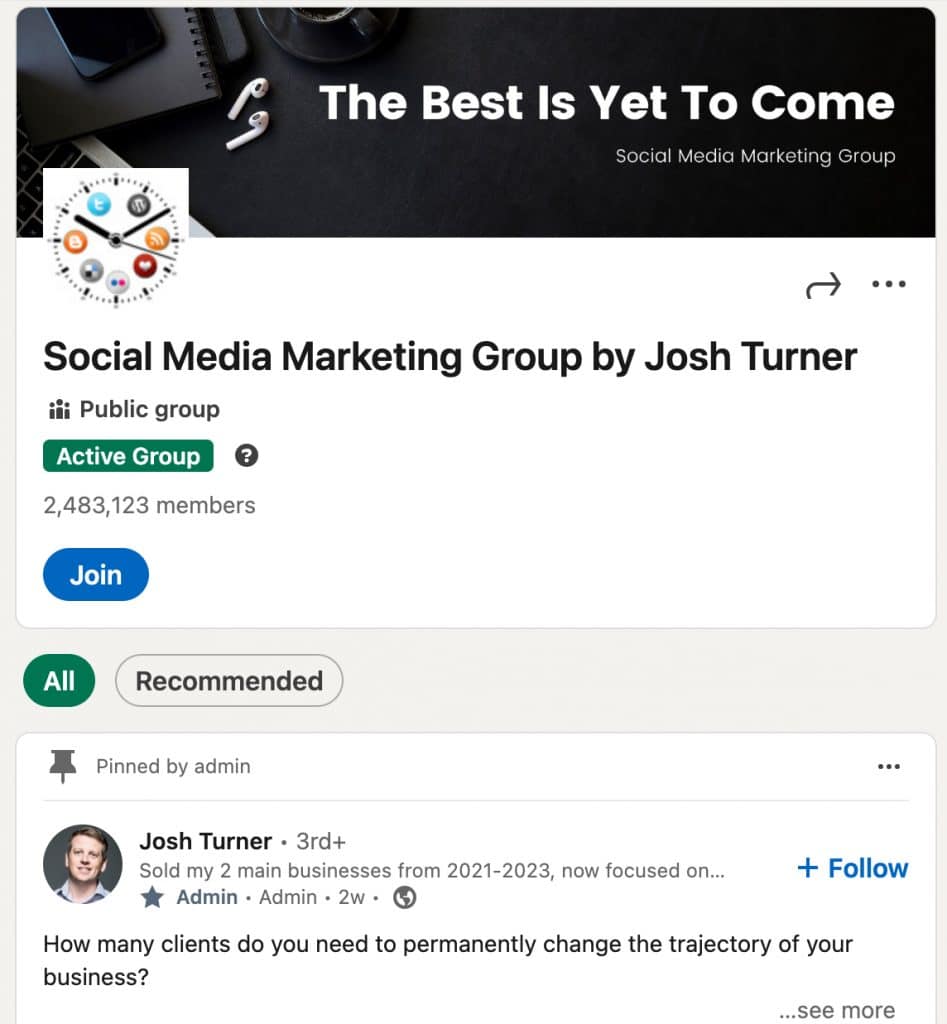
In the online marketing niche, it’s crucial to stay updated with community news. The largest LinkedIn community in this field has nearly 2.5 million members and is actively managed by founder Josh Turner.
This Social Media Marketing group is the world’s largest LinkedIn group focused on digital marketing. It aims to help businesses of any size leverage social media to gain more followers, sales opportunities, clients, and customers by sharing proven social media marketing strategies.
Posts in the group are strictly moderated. Most of the content you will see includes detailed posts from admins sharing real experiences in lead generation, LinkedIn news, YouTube show snippets, and surveys. Guest posts are rare.
#2 Amazon sellers
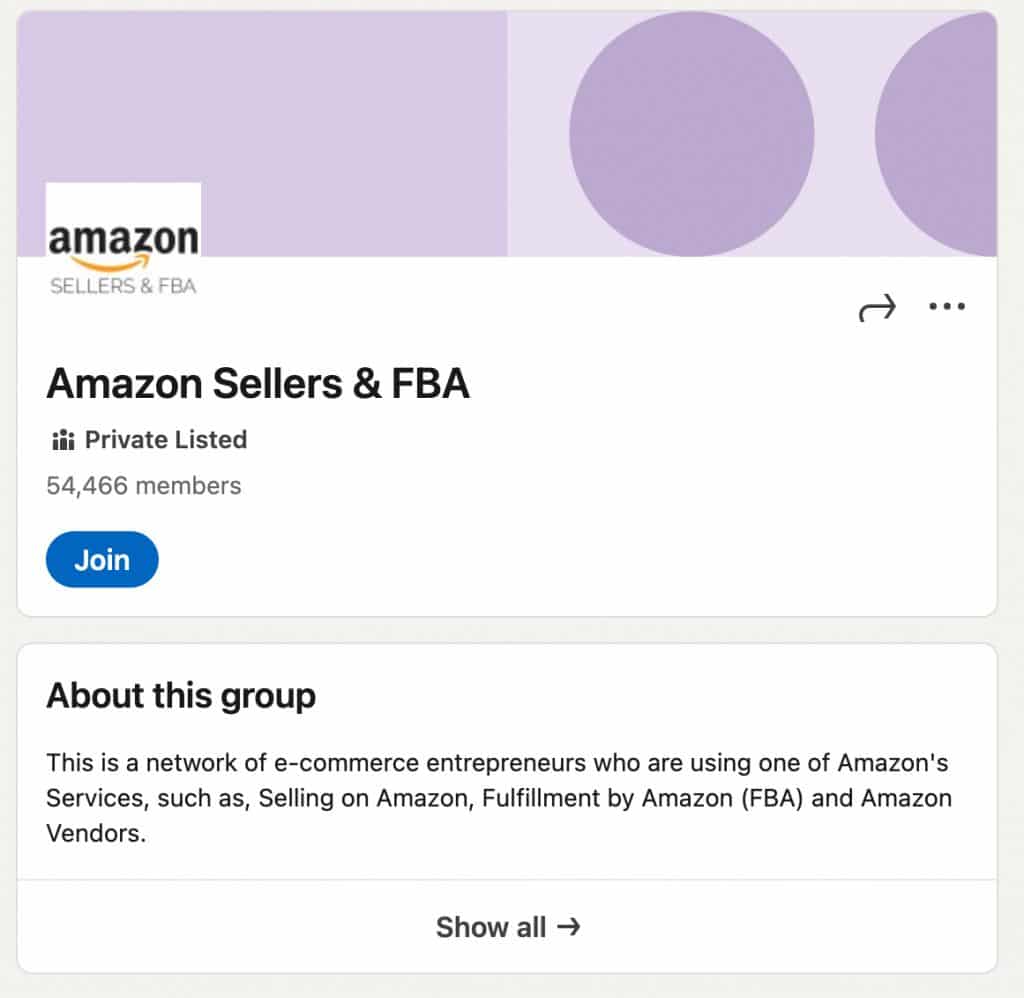
There are numerous groups in this niche that help promote products and stores. Sellers share tips on setting up ads, automation, and store management tools. This is one of the top communities where you can find strategies for discovering new markets and products, and learn from the experiences of actual sellers. Given the high number of groups, some allow open posting, which can lead to spam. Therefore, it is better to choose private listed groups.
#3 HR
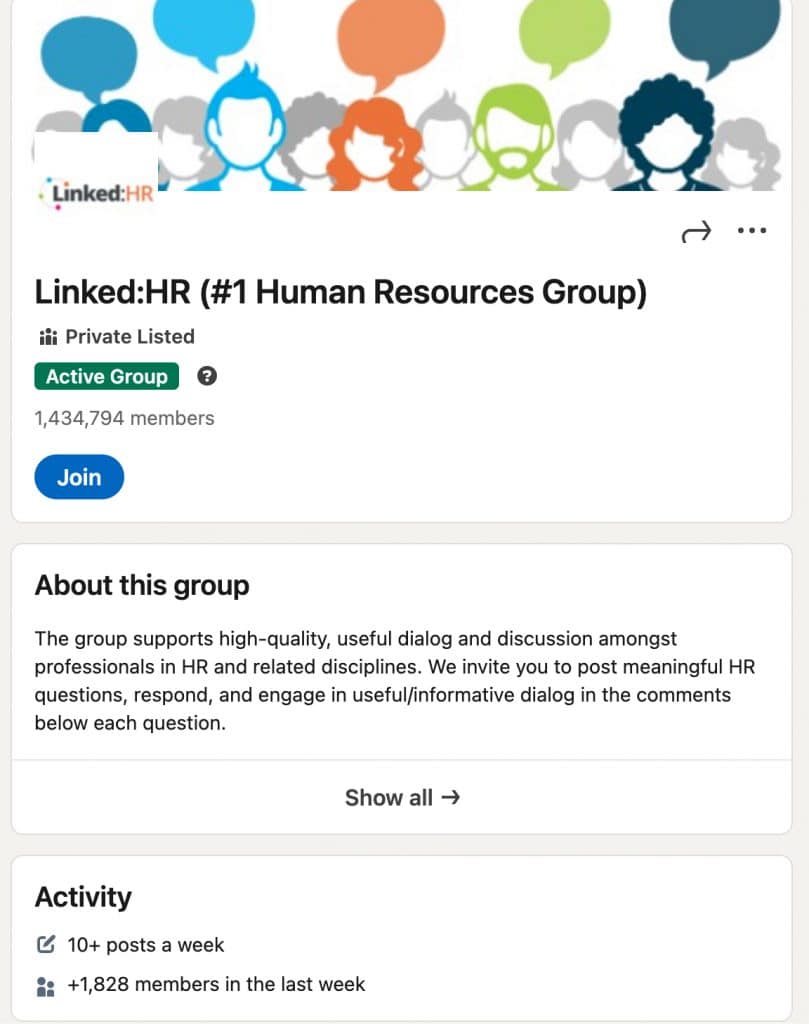
The HR niche has a significant presence on LinkedIn. Joining such groups can help you find colleagues in your field and stay updated on useful work trends.
Linked:HR is the largest LinkedIn group in the HR sector, with 1.5 million members. By joining this group, you can connect with HR professionals from around the world. Founded in 2007, the group’s posts and membership applications are moderated.
#4 Blockchain & Web3
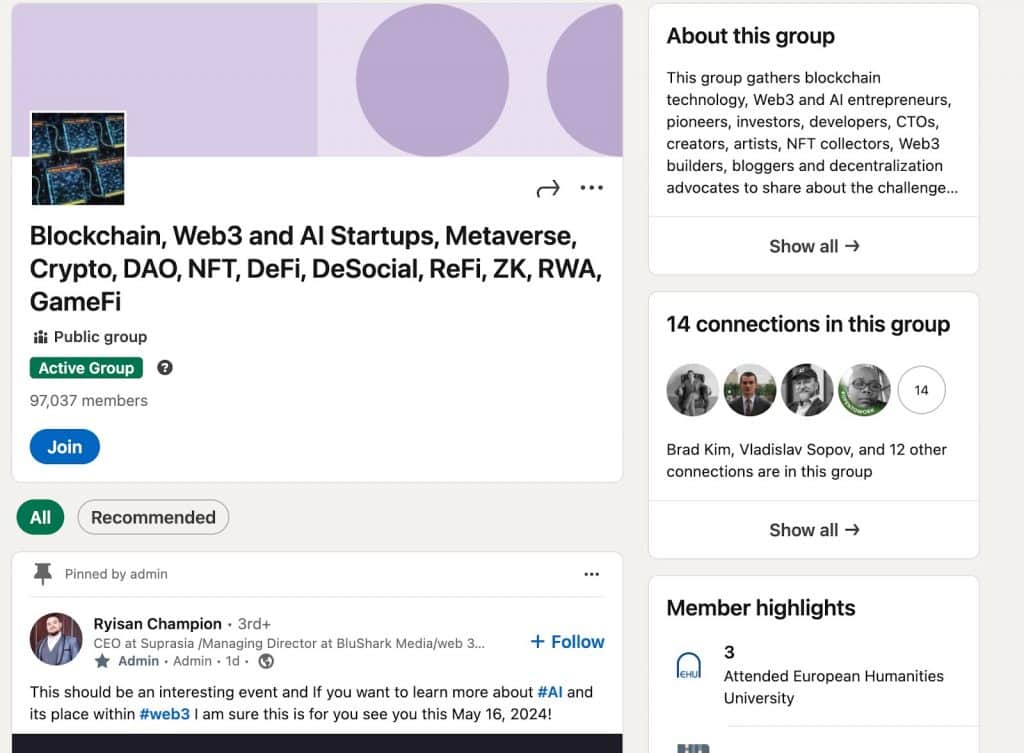
To establish new connections in the crypto, metaverse, and blockchain industries, it’s not necessary to attend offline conferences and events. You can find numerous LinkedIn groups in this niche where you’ll discover posts about new podcasts with founders, CEOs, and managers, as well as links to articles and news about new projects. The group is public, but each post is moderated by admins, ensuring there is no spam.
#5 Technology investor
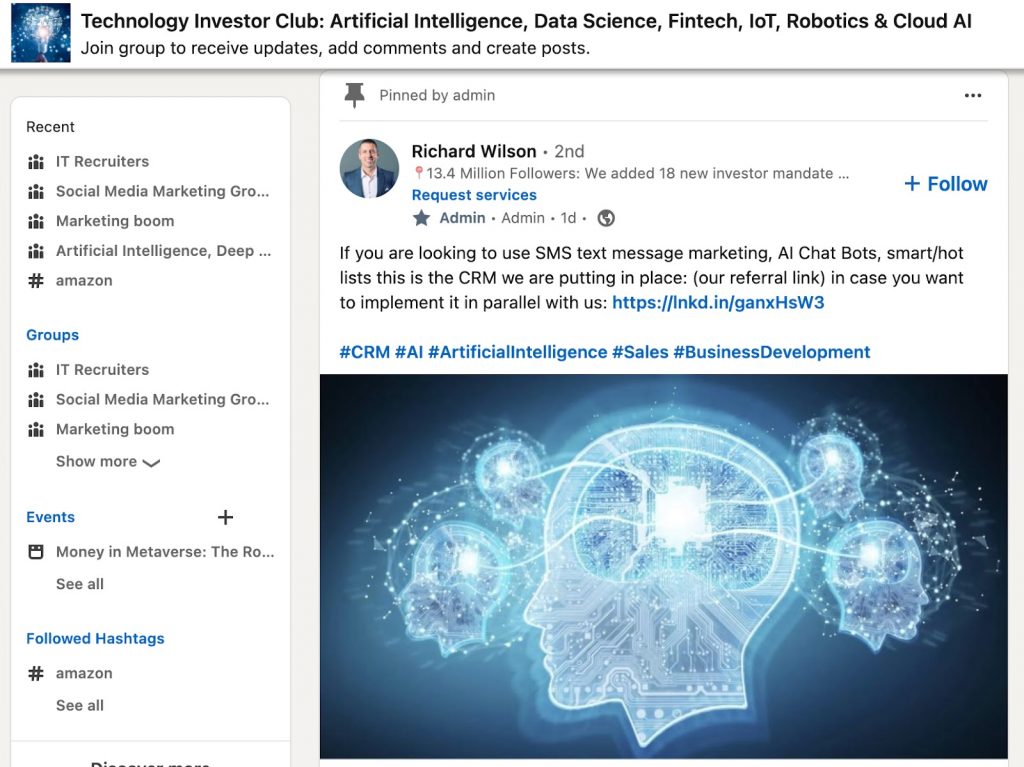
As an investor, it’s important to learn about new projects as quickly as possible. This club is for those who want to invest in technologies like AI, machine learning, deep learning, data science, and fintech. The group has over one million members, with 12,000 new members joining just last week. Posts are strictly moderated by admins, making it an excellent source of information on new technologies.
How to invite someone to a LinkedIn group automatically
As seen from the examples, a LinkedIn group can be an excellent lead magnet and the first point of contact with your target audience on LinkedIn.
Given the multitude of groups on this social network, as a creator, you can invest time and effort to build an audience.
Only admins and the group creator can invite members to join the group. Other members can invite only their 1st-degree connections. Therefore, when creating a group, it’s beneficial to have admins with a large existing LinkedIn audience.
You can use Linked Helper to automate the invitation process without manual clicks! Compared to other automation tools, Linked Helper includes better features for auto-inviting people to your group.
Explore our comparison articles.
It can be used as part of a template, separately, or added to a drip campaign.
- First, you can expand your contacts. Create a drip campaign that first sends an invite to your profile and then to the group.
- When you reach the invitation limit, you can send an automated message with a link to the group. This is necessary because LinkedIn doesn’t allow sending thousands of invites to prevent spam.
Note: The number of invitations that you can amass depends on many factors like current group members count, your profile trust score, etc.
Hack: LinkedIn groups marketing via messages
LinkedIn allows you to send messages to people who are not your direct contacts if you are members of the same group. This enables you to network and start conversations faster.
How to message LinkedIn group members (‘Message sequence via group’ template)
With Linked Helper, you can automate the sending of these messages. By adding people from a specific group to your funnel and setting the message text, you only need to start the campaign. The software will then gradually send messages within the daily limit.
Finally…
LinkedIn groups can serve as powerful lead magnets and networking hubs. To create and manage a successful LinkedIn group, you need thoughtful planning and strategic use of tools like Linked Helper.
Since only admins and the group creator can send group invitations, it’s beneficial to have admins with large networks.
Automate the invitation process with Linked Helper to ensure a steady influx of new members without manual effort. Initially, focus on expanding your network by sending connection requests to potential members. This strategy will build a robust LinkedIn group, fostering a rich source of networking opportunities and potential leads!